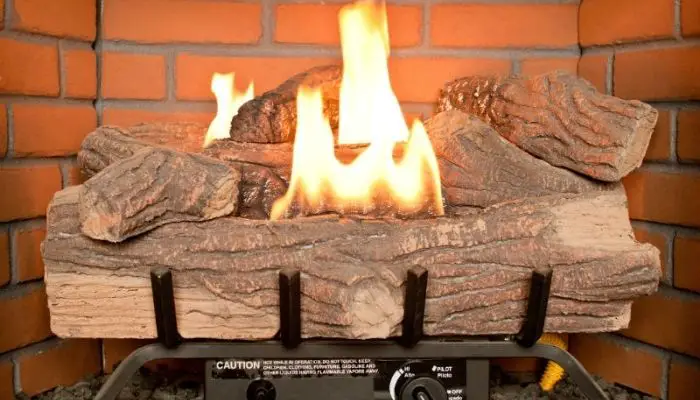NO!! A wood-burning fireplace is not energy efficient. This is because 90% of the heat produced is lost through the chimney. The heat in the room is only 10% of all heat. The hot air in the room can also be pulled back into the firebox and then released through the chimney. Sincerely, wood-burning fireplaces are energy inefficient.
Wood-burning fireplaces are common in most homes because they add aesthetics to your room. The glow of the flame and the natural smell of wood attract many users. You can do a few things to save about 5% of the heat produced. Use the tips below to increase heat from 10% to 15% in your room.
How to Make Wood-burning Fireplaces Energy Efficient
1. Open windows and doors
This does not mean a wide-open window or door. Simply crack the window open so that the fireplace can draw in air from outside. Or else it will consume the already hot air in your room. The hot air will rise up through the chimney, and cold air is drawn in to be heated. You can use the home ventilation system to add more air to the room.
2. Close the damper when the fireplace is not in use
A damper controls the airflow in the chimney, and it is a good place for air leakage. The hot air in the room can leak through the damper, making the room cold. Ensure you have closed down the damper when the firebox is off. It is good to install two dampers, one at the bottom and the other at the top, to support each other.
3. Try an inflatable fuel plug.
The damper can become weak with time and start allowing some heat loss. In this case, you need an inflatable fuel plug that expands and holds tighter than the damper. It will cover the whole diameter of the chimney, giving no chance to the hot air in the room. You can use both the damper and the fuel plug to make the fireplace at least energy efficient.
4. Install screens and glass doors
Open combustion loses alot of heat in a wood-burning fireplace. The fireplace screens and glass doors will create room for closed combustion, which is an energy-efficient method. The screen and glass door will also absorb heat and radiate it slowly in the room.
A technique called direct ducting can save the hot air in the room. This is when the air is drawn from outside into the firebox. Combine this technique with glass doors and save up to 20% of heat. You can seal the vents on the glass door and get air from outside.
5. Install fans in your room
Heat travels slowly from the fireplace to the other end of the room. This slow transfer will result in a lot of heat loss. But rotating fans can help circulate the heat in the room faster. Light up your fireplace for about 30 minutes before turning on the fans. Install the fan close to the fireplace for better circulation of heat.
6. Install the fireplace inserts or wood stove
A fireplace insert or woodstove is a ready-made fireplace that is energy efficient. Most wood stoves can fit in the wood-burning firebox and draw air from outside. Wood stoves also have glass doors and use little firewood. Some fireplace inserts can be electric or gas hence saving more energy.
7. Get a fireback
A fireback is a heavy sheet of metal installed at the back of a firebox. Most firebacks are from cast iron. This accessory absorbs heat and will radiate it in the room slowly. It will save up most of the heat that would have been lost via the chimney. It also protects the wall from the excess heat in the firebox.
8. Build a good fire and use hardwoods
You will lose alot of heat via the chimney if you build a poor fire. Arrange the firewood in a manner that will allow excellent airflow, and the fire will spread faster. Hardwoods are also the best for wood-burning fireplaces because they burn up slowly and produce the most heat. Softwoods are less dense and burn up more quickly than propane.
Conclusion
Wood burning fireplaces are energy inefficient, and heat can be lost when the fireplace is on or off. 90% of the heat is lost with the chimney, but you can reduce this percentage using the above tips. Be careful with the damper because that is the first escape route for warm air in the house.


